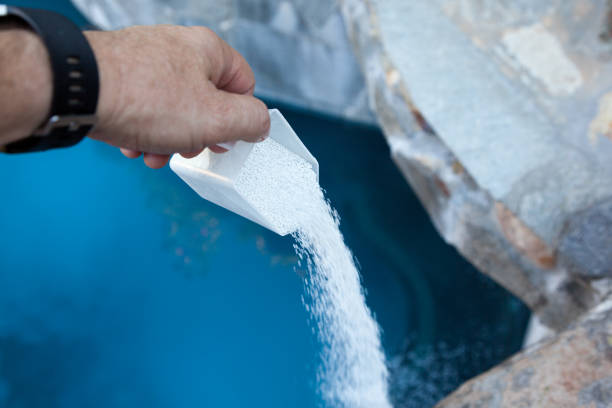
A sparkling, inviting swimming pool is a source of joy for any pool owner, but it requires proper maintenance and care. One of the most common and persistent challenges that pool owners face is algae growth.
Algae can quickly turn your pool chemistry water into an unsightly green mess if left untreated. In this quick guide, we’ll explore the different types of pool algae, the common causes of their growth, and effective strategies for both treatment and prevention.
To maintain a beautiful and safe swimming environment, it’s essential to understand what pool algae are and how to combat their growth effectively.
Pool algae are simple, plant-like organisms that belong to the kingdom Protista. They thrive in aquatic environments, including swimming pools, where they can quickly multiply under the right conditions.
Algae can vary in colour, with green, yellow, and black being the most common types found in pools.
Before we delve into the treatment and prevention methods, let’s get familiar with the various types of pool algae:
Green algae are the most common type found in swimming pools. They can turn pool water green and make surfaces slippery and unattractive.
Green algae usually float in the water and can quickly multiply, making your pool unsuitable for swimming.
Yellow pool algae or mustard algae are typically found clinging to pool walls and surfaces. They can be challenging to remove and are often mistaken for sand or dirt.
These algae can cause eye and skin irritation and create an unhealthy swimming environment.
Black algae are the most stubborn and challenging to eradicate. They form dark, slimy spots on pool surfaces, such as walls and floors.
These spots are often resistant to standard pool chemicals and require thorough treatment.
Understanding the causes of algae growth is essential to prevent it effectively. Here are the most common factors that contribute to algae infestations:
By addressing these common causes of algae growth, you’ll significantly reduce the risk of your pool becoming a green, slimy nightmare.
Now that we understand the types and causes of algae, let’s explore strategies for treating pool algae effectively:
Algaecides are chemicals specially designed to kill and prevent algae. There are different types available, so consult with a pool professional to determine the most suitable option.
Manual removal of algae from pool surfaces is essential. Regularly brush and scrub pool walls, floors, and steps to dislodge and remove algae.
Clean and backwash your pool filter regularly to ensure it effectively removes algae spores and contaminants from the water.
Maintain proper pH and chlorine levels in your pool. Balanced water chemistry is vital for preventing algae growth.
Prevention is the key to keeping your pool algae-free. Here are steps to prevent algae growth:
A clear, algae-free pool is within your reach with proper maintenance and treatment strategies.
By understanding the types of pool algae, addressing their common causes, and implementing effective treatment and prevention methods, you can enjoy a pristine swimming pool year-round.
For more information on pool algae treatment and prevention products, explore our product page or contact us for expert guidance. Say goodbye to green pools and hello to crystal-clear waters!